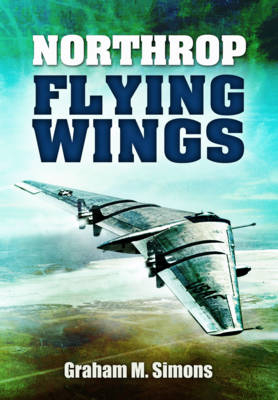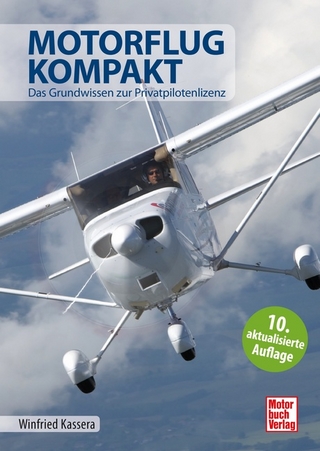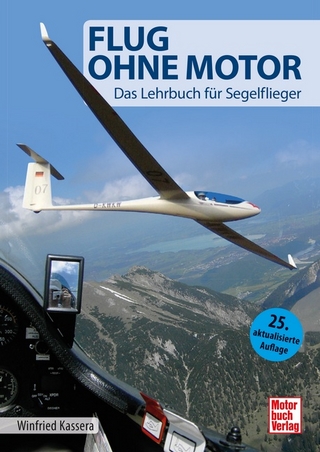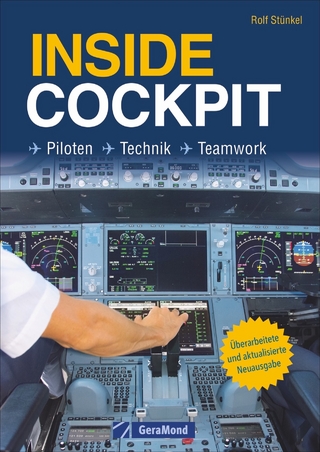
Northrop Flying Wings
Seiten
2013
Pen & Sword Aviation (Verlag)
978-1-78159-036-2 (ISBN)
Pen & Sword Aviation (Verlag)
978-1-78159-036-2 (ISBN)
- Titel ist leider vergriffen;
keine Neuauflage - Artikel merken
Charts the early history of the 'flying wing' design, an important advancement in the field of aeronautics. Profiles Jack Northrop, a recognized and respected aeronautics engineer and industrial designer who strove to push the barriers of aircraft capability.
Jack Northrop's flying wings - or to give them their more correct title, all wing aircraft - were some of the most spectacular, graceful and elegant flying machines ever to grace the skies. A design as aeronautically pure as a flying wing had huge advantages over conventional aircraft design. This advantage was that drag was reduced to an absolute minimum. As a result of this minimum drag, the performance of the flying wing became unequalled in speed, range and operating economy. For many years aeronautical designers realised that by reducing drag - that is the net aerodynamic force acting opposite to the direction of the movement of the solid object caused by the shape or form of an aircraft as it passes through the air - that machine's performance could be greatly increased. Early steps taken in this direction brought about the changes from biplane to monoplane design; the elimination of external wing struts and flying wires; the incorporation of retractable undercarriages and the general overall 'smoothing out' of the shape. However, in spite of all these advances, the average conventional aircraft of today still has two to four times the drag of a flying wing.
So in order to reduce drag to its absolute minimum, a number of aircraft designers took the drastic step of eliminating both the fuselage and tail altogether and placed the pilot, the engines and the payload completely inside the wing envelope. These aircraft from Northrop, in particular the incredible eight-engined all-jet YB-49, were the purest form of flying machines - no fuselage, no tail - in fact barely any vertical surfaces at all. They seemed almost a fantasy, something from the realms of science fiction. For around forty years the history books recorded all of Northrop's all-wing aircraft as little more than an aberration, almost a failure, something that was an interesting dead-end that was investigated and found to be little more than aA--A-- byway to mainstream conventional aeronautics that suffered a highly publicised fatal crash and became embroiled in American politics. Then another design surfaced that equally captured the public imagination. It was from Northrop-Grumman, the successor company to the original designers and builders and it had exactly the same wingspan - this was the B-2 Spirit.
Jack Northrop's flying wings - or to give them their more correct title, all wing aircraft - were some of the most spectacular, graceful and elegant flying machines ever to grace the skies. A design as aeronautically pure as a flying wing had huge advantages over conventional aircraft design. This advantage was that drag was reduced to an absolute minimum. As a result of this minimum drag, the performance of the flying wing became unequalled in speed, range and operating economy. For many years aeronautical designers realised that by reducing drag - that is the net aerodynamic force acting opposite to the direction of the movement of the solid object caused by the shape or form of an aircraft as it passes through the air - that machine's performance could be greatly increased. Early steps taken in this direction brought about the changes from biplane to monoplane design; the elimination of external wing struts and flying wires; the incorporation of retractable undercarriages and the general overall 'smoothing out' of the shape. However, in spite of all these advances, the average conventional aircraft of today still has two to four times the drag of a flying wing.
So in order to reduce drag to its absolute minimum, a number of aircraft designers took the drastic step of eliminating both the fuselage and tail altogether and placed the pilot, the engines and the payload completely inside the wing envelope. These aircraft from Northrop, in particular the incredible eight-engined all-jet YB-49, were the purest form of flying machines - no fuselage, no tail - in fact barely any vertical surfaces at all. They seemed almost a fantasy, something from the realms of science fiction. For around forty years the history books recorded all of Northrop's all-wing aircraft as little more than an aberration, almost a failure, something that was an interesting dead-end that was investigated and found to be little more than aA--A-- byway to mainstream conventional aeronautics that suffered a highly publicised fatal crash and became embroiled in American politics. Then another design surfaced that equally captured the public imagination. It was from Northrop-Grumman, the successor company to the original designers and builders and it had exactly the same wingspan - this was the B-2 Spirit.
Graham Simons is a highly respected aviation historian and author. He as many contacts within the aviation industry which has resulted into him accessing the many previously unpublished photographs within this book.
| Erscheint lt. Verlag | 1.7.2013 |
|---|---|
| Zusatzinfo | 270 black and white photographs approximately |
| Verlagsort | South Yorkshire |
| Sprache | englisch |
| Maße | 156 x 234 mm |
| Themenwelt | Natur / Technik ► Fahrzeuge / Flugzeuge / Schiffe ► Luftfahrt / Raumfahrt |
| Geschichte ► Teilgebiete der Geschichte ► Militärgeschichte | |
| Technik ► Fahrzeugbau / Schiffbau | |
| Technik ► Luft- / Raumfahrttechnik | |
| ISBN-10 | 1-78159-036-2 / 1781590362 |
| ISBN-13 | 978-1-78159-036-2 / 9781781590362 |
| Zustand | Neuware |
| Haben Sie eine Frage zum Produkt? |
Mehr entdecken
aus dem Bereich
aus dem Bereich
das Grundwissen zur Privatpilotenlizenz
Buch | Hardcover (2024)
Motorbuch Verlag
39,90 €


